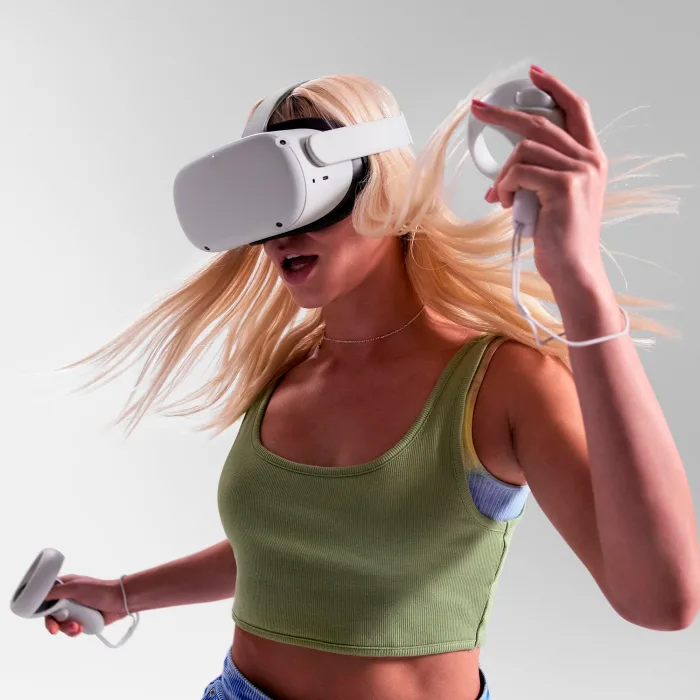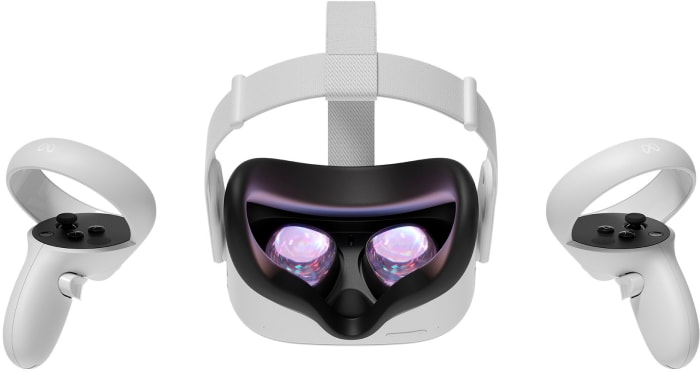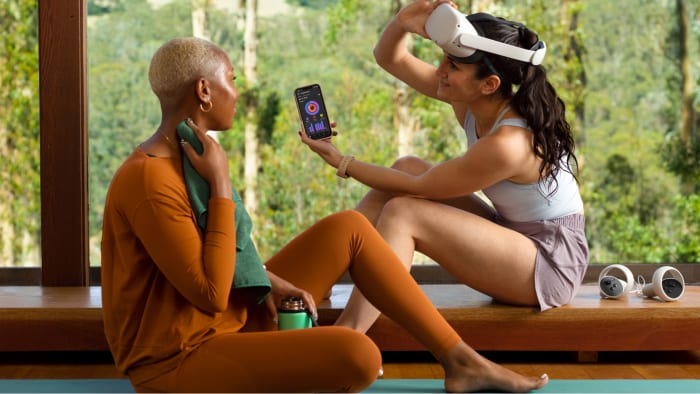Artificial Intelligence
Guide to VR: Everything You Need to Know About Headsets and Experiences

Here’s a breakdown of what Virtual Reality is. We’re answering common questions for VR newbies and veterans alike.
VR and the metaverse are two terms that we’ve all heard a lot about over the last year or so. The metaverse is something, but what exactly is VR? Is it really the future? While I don’t have an answer about virtual reality being a daily way of computing in the future, I do know what VR is, and I’ve even spent a little bit of time in the metaverse (mostly talking to myself).
There aren’t a whole lot of options when it comes to VR headsets, but the options you do have are from big-name companies. From Meta’s Quest 2 (formerly the Oculus Quest 2) or Sony’s PlayStation VR headset to HTC Vive Flow that looks like it’s straight from the future or Steam’s Valve index — your bases are covered, regardless of budget or capabilities.
Below you’ll find common questions with answers for VR noobs and veterans alike.
The Arena Media Brands, LLC and respective content providers to this website may receive compensation for some links to products and services on this website.
What is VR?
Virtual reality (VR) is an interactive and immersive experience that’s powered by modern technology. To take part in a VR experience, you’ll put on a headset that usually has two lenses and screens inside it. The headset is either connected to a computer or contains everything it needs to create a virtual world, such as a roller coaster ride, and show it on the screens.
There are many different use cases for VR headsets, with the main uses right now being gaming, fitness, and entertainment.
What are common VR terms I should know?
Learning about any new product category can be intimidating as you go through blog and forum posts using acronyms or terms that you’re not familiar with. Here are a few of those terms and their meaning which should hopefully help you feel more comfortable as you research.
Field of View (FOV): This is how much of an environment you can see when wearing a VR headset. The higher the number, the more of the virtual scene that you can see, and the more immersive the experience will feel.
Refresh rate: Like any computer monitor or TV, the display’s in your VR headset refresh at a specific speed. The refresh rate of the display plays a big part in making the overall experience feel realistic. The higher the refresh rate, the better. If you’re someone who often gets motion sickness or vertigo from VR, you’ll want to avoid anything that has a refresh rate below 90 frames per second.
Positional tracking: One aspect of VR that adds to the feeling of actually being in another world is your ability to move around inside that world. In order to do that, however, the headset needs a way to track your movements. That means tracking where you’re looking, where your hands are, and what they’re doing, as well as where you’re at in a dedicated space. Some headsets offer tracking via the headset itself, while others require base stations set up in a given space for better tracking.
Aren’t VR headsets expensive?
VR headsets, traditionally, have been expensive. But as the market matures, and more companies enter the mix, the price of a VR headset has started to come down. For example, the Meta Quest 2 is $299 for a completely wireless experience.
However, headsets such as Valve’s Index VR Kit (which comes with two controllers and two base stations) costs $999. Vive’s Pro 2 is the most expensive of the group, at $1,399. It also comes with two controllers and two base stations.
Are there additional fees or expenses for VR?
After buying the hardware, you’ll still need to pay for apps and games. The cost for the software depends on the platform and the app itself. For example, Beat Saber, one of the more popular games on Meta headsets is $29.99. Steam’s Valve headset works with VR games that you buy from Steam.
Vive offers a Viveport subscription for $12.99 per month, or $8.99 per month if you pay for a year upfront. That subscription gives you unlimited access to all apps and games on the platform.
Sony’s PlayStation VR platform also sells VR-specific games for you to download and play.
All of the platforms mentioned here have free demos along with free games and apps. So while you don’t have to pay for everything, the more popular titles will have some sort of fee — just like any gaming pc or console.
Do I need a gaming PC to use a VR Headset?
Whether you need a gaming PC or not depends on the type of VR headset you buy. For example, Meta’s Quest 2 is a standalone headset that can be used anywhere — no PC required. However, the Valve Index requires a PC, while the PlayStation VR requires a PlayStation 4 or PlayStation 5.
The Vive Flow not only looks like a futuristic pair of sunglasses, but it also lacks any requirement for a connected PC, but it does need an Android phone paired to it. Vive has several other VR headsets, such as the Pro and Cosmos Series, all of which need to be tethered to a PC.
How much space do I need to use a VR headset?
That depends. Technically, you only need enough clear space around you that you can turn around and spin or swing your arms and not hit anything. However, as my kids and I can personally attest — the more space, the better. Even playing a casual round of Beat Saber often results in whoever is playing not staying in the same spot throughout each song. You don’t need an entire room clear of any obstacles, but you will want as much space as you can clear to ensure you don’t hit something or trip.
Meta recommends a space of 6.5-feet by 6.5-feet to use its Roomscale feature that lets you walk around within the play area.
When using the Meta Quest 2 in a new room, you go through a quick setup process to mark and identify your playing space. You place a grid on the floor, and then you can mark your safe space by drawing a line on the floor.
During gameplay, if you move around and get near the edge of the boundary, the virtual reality world you currently see will become transparent, allowing you to see your real-world environment, reminding you that you’re close to the edge of your safe area.
Will I get sick?
Maybe. Personally, I get motion sickness from games and apps where my character walks around while I stay stationary. But in games like Beat Saber or when watching a movie on Netflix, I have much better luck with avoiding vertigo and/or motion sickness.
I’ll echo the advice I received early on when I started testing the Meta Quest 2:
- Take breaks. If you start to feel sick, that’s your body telling you to take a break.
- Go slow. Don’t start out thinking that you can play a game for an hour, or even 30 minutes. Start out by getting familiar with the menu. Then maybe watch a video or two. Then play a stationary game, and so on.
- Higher-end headsets (all of which have been talked about here) are better for those who experience motion sickness. The higher refresh rate of the screens helps a lot.
Most importantly, have fun. Being transported to another world, or spending time in the metaverse talking with friends really does make it feel like we’re living in the future. As long as you don’t get sick.
Source: https://www.thestreet.com/personal-finance/beginners-guide-to-vr



